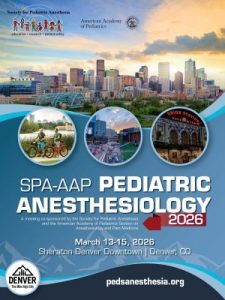On Dec. 14, 2016 the U.S. Food and Drug Administration (FDA) issued a safety announcement regarding the potential effect of anesthetics on children younger than 3 years of age. Recent studies suggest that a single, relatively short exposure to general anesthetic and sedation drugs in infants or toddlers is unlikely to have negative effects on behavior or learning. However, further research is needed to fully characterize how early life anesthetic exposure affects children’s brain development. To better inform the public about this potential risk, we have taken points from the FDA’s communication and are sharing those with families to help them make educated decisions about the care of their young child.
Facts About General Anesthetic and Sedation Drugs
- General anesthetic and sedation drugs are used to put infants and children into a deep sleep so they do not feel pain during surgery or procedures.
- These drugs are usually injected into a vein or inhaled through a mask or breathing tube.
- General anesthetic drugs are used in millions of children every year to ensure their health, safety and comfort during surgery and other procedures.
Additional Information for Parents and Caregivers
- Anesthetic and sedation drugs are necessary for infants and children who require surgery or other painful or stressful procedures. Additionally, untreated pain can be harmful to children and their developing nervous systems.
- Research suggests that repeated or prolonged use of general anesthetic or sedative drugs may be associated with negative effects on the developing brain.
- These effects are subtle and may include learning, memory, or behavior problems.
- The FDA has issued a warning that this may affect children younger than 3 years who are undergoing anesthesia for more than three hours, or are exposed to repeated anesthetics.
- Recent studies in children suggest that a single, short duration exposure to general anesthetic and sedation drugs under age 3 years is unlikely to have negative effects on behavior or learning.
- No specific anesthetic or sedative medications have been shown to be safer than any other.
- Parents and caregivers should ask for information about the planned surgery or procedure, including duration of anesthesia and need for any repeated procedures.
- Parents should discuss with their anesthesiologist and surgeon the potential adverse effects of anesthesia and brain development and appropriate timing of procedures that could be delayed without jeopardizing their child’s health.
- Examples of life-threatening conditions in newborns and other children younger than 3 years that require surgery or other procedures that should not be delayed include, but are not limited to:
- Congenital heart defects
- Esophageal atresia, a disorder in which the esophagus does not develop properly
- Intestinal blockage or twisting of the intestines
- Gastroschisis and omphalocele, which are birth defects of the abdominal wall
- Diaphragmatic hernia, which is a birth defect in which there is an abnormal opening in the diaphragm
- Congenital lung lesions
- Pyloric stenosis, which is a narrowing of the opening from the stomach into the small intestine
- Craniofacial reconstruction
- Complex urological reconstruction
- Examples of other common procedures for non-life-threatening conditions in children younger than 3 years that are necessary and should not be delayed are cleft lip or palate repair and surgery to repair undescended testicles in boys.
- If you have further questions about your child’s care, talk to your anesthesiologist and surgeon.
- Other useful resources:
- SmartTots website: www.smarttots.org
- Society for Pediatric Anesthesia website: pedsanesthesia.org
- U.S. FDA Website: www.fda.gov
